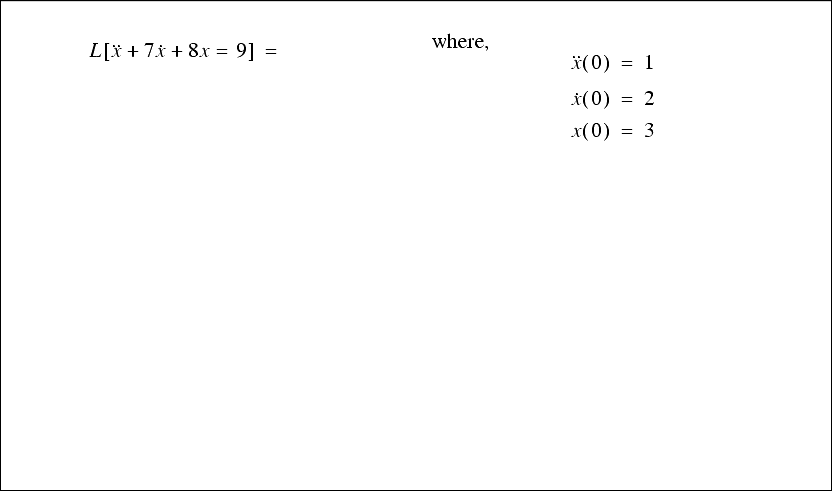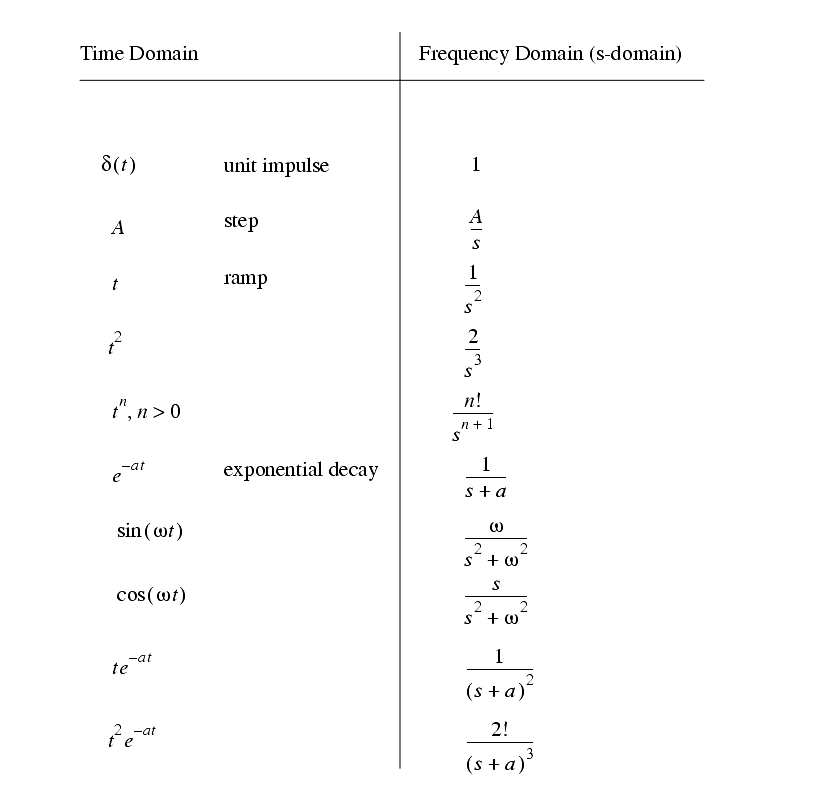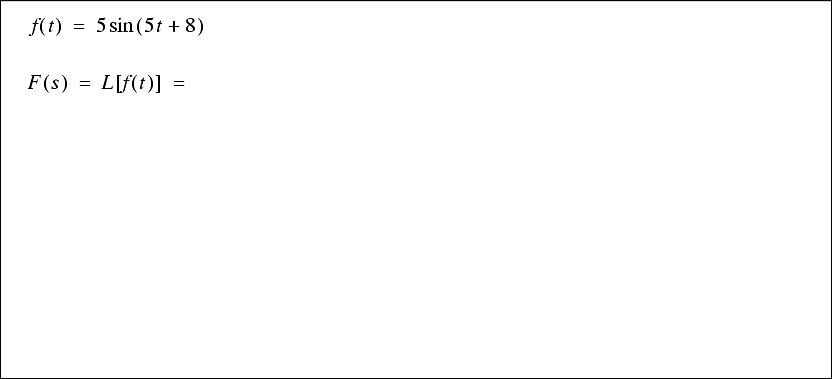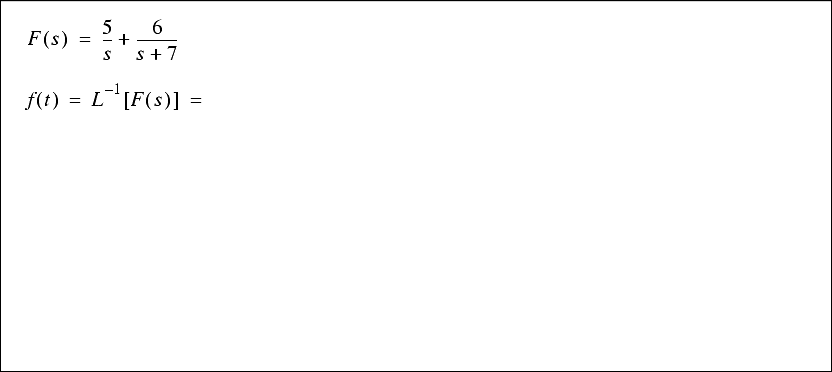17.2 APPLYING LAPLACE TRANSFORMS
������������
The process of applying Laplace transforms to analyze a linear system involves the basic steps listed below.
1. Convert the system transfer function, or differential equation, to the s-domain by replacing 'D' with 's'. (Note: If any of the initial conditions are non-zero refer to the transform tables for extra terms.)
2. Convert the input function(s) to the s-domain using the transform tables.
3. Algebraically combine the input and transfer function to find an output function.
4. Use partial fractions to reduce the output function to simpler components.
5. Convert the output equation back to the time-domain using the tables.
17.2.1 A Few Transform Tables
������������
Laplace transform tables are shown in Figure 17.5, Figure 17.7 and Figure 17.8. These are commonly used when analyzing systems with Laplace transforms. The transforms shown in Figure 17.5 are general properties normally used for manipulating equations, and for converting them to/from the s-domain.
Figure 17.5 Laplace transform tables
Figure 17.6 Drill Problem: Converting a differential equation to s-domain
The Laplace transform tables shown in Figure 17.7 and Figure 17.8 are normally used for converting to/from the time/s-domain.
Figure 17.7 Laplace transform tables (continued)
Figure 17.8 Laplace transform tables (continued)
Figure 17.9 Drill Problem: Converting from the time to s-domain
Figure 17.10 Drill Problem: Converting from the s-domain to time domain









